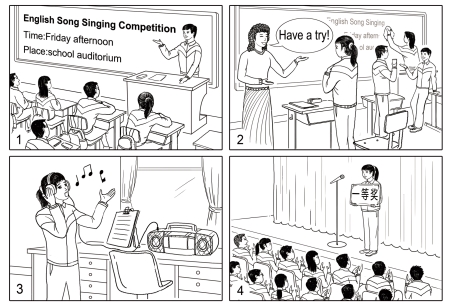题目内容
In the fall of 1985, I was a bright-eyed girl heading off to Howard University, aiming at a legal career and dreaming of sitting on a Supreme Court bench somewhere. Twenty-one years later I am still a bright-eyed dreamer and one with quite a different tale to tell.
My grandma, an amazing woman, graduated from college at the age of 65. She was the first in our family to reach that goal. But one year after I started college, she developed cancer. I made the choice to withdraw from college to care for her. It meant that school and my personal dream would have to wait.
Then I got married with another dream: building my family with a combination of adopted and biological children. In 1999, we adopted our first son. To lay eyes on him was fantastic and very emotional. A year later came our second adopted boy. Then followed son No. 3. In 2003, I gave birth to another boy.
You can imagine how fully occupied I became, raising four boys under the age of 8. Our home was a complete zoo—a joyous zoo. Not surprising, I never did make it back to college full-time. But I never gave up on the dream either. I had only one choice: to find a way. That meant taking as few as one class each semester.
The hardest part was feeling guilty about the time I spent away from the boys. They often wanted me to stay home with them. There certainly were times I wanted to quit, but I knew I should set an example for them to follow through the rest of their lives.
In 2007, I graduated from the University of North Carolina. It took me over 21 years to get my college degree!
I am not special, just single-minded. It always struck me that when you’re looking at a big challenge from the outside it looks huge, but when you’re in the middle of it, it just seems normal. Everything you want won’t arrive in your life on one day. It’s a process. Remember: little steps add up to big dreams.
1.When the author went to Howard University, her dream was to be _____.
A. a writer B. a teacher
C. a judge D. a doctor
2.Why did the author quit school in her second year of college?
A. She wanted to study by herself.
B. She fell in love and got married.
C. She suffered from a serious illness.
D. She decided to look after her grandma.
3.What can we learn about the author from Paragraphs 4 and 5?
A. She was busy yet happy with her family life.
B. She ignored her guilty feeling for her sons.
C. She wanted to remain a full-time housewife.
D. She was too confused to make a correct choice.
4.What does the author mostly want to tell us in the last paragraph?
A. Failure is the mother of success.
B. Little by little, one goes far.
C. Every coin has two sides.
D. Well begun, half done.
5.Which of the following can best describe the author?
A. Caring and determined.
B. Honest and responsible.
C. Ambitious and sensitive.
D. Innocent and single-minded.
1.C
2.D
3.A
4.B
5.A
【解析】
试题分析:从作者的故事让人明白一个道理“失败是成功之母。”
1.1】C 细节理解题。由第一段第一句中的dreaming of sitting on a Supreme Court bench可知,作者去霍华德大学时就梦想着能够坐在美国联邦最高法院的长凳上,即她渴望成为一名法官。故答案为C项。
2.2】D细节理解题。由第二段第三、四句可知,作者在大二时退学回家是为了生病的祖母。其他三个选项均不是作者退学的理由。故选D项。
3.3】A推理判断题。由第四、五段的叙述可知,作者在家里虽然忙碌,但她的确非常快乐。由第五段第一句中的The hardest part was feeling guilty about...可知B项的叙述是错误的;由第四段第四、五句可知,作者并没有放弃自己的梦想去当全职家庭主妇,排除C项;由第四段倒数第二句中“I had only one choice:to find a way.”可知,作者对于这个选择是果断的,并没有感到困惑,排除D项。
4.4】B主旨大意题。最后一段的最后一句“Remember: little steps add up to big dreams.”是该段的主题句,意思是:千里之行,始于足下。Failure is the mother of success. “失败是成功之母。”;Little by little,one goes far. “千里之行,始于足下。”;Every coin has two sides. “凡事都有两面性。”;Well begun,half done. “好的开始是成功的一半。”故选B项。
5.5】A推理判断题。由第二段作者在大二时退学回家照顾祖母可知,这表明作者是有爱心的;由倒数第二段作者用了21年多的时间最终取得大学学位,这表明作者是有决心的。故选A项。
考点:人物传记类阅读

 天天向上一本好卷系列答案
天天向上一本好卷系列答案 小学生10分钟应用题系列答案
小学生10分钟应用题系列答案